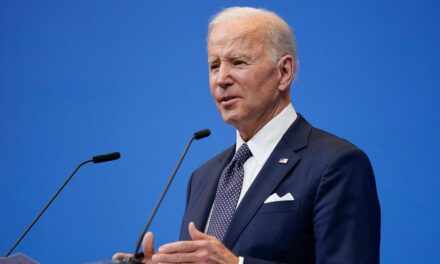
Opinion: How to stop racism against AAPIs in the military
That war against prejudice wasn’t over — it is still being fought today by Asian Americans and Pacific Islanders, who face a rising tide of bigotry and hate crimes. According to the non-profit organization Stop AAPI Hate, approximately 6,600 anti-Asian hate incidents have been documented across the US in the year since March 2020.
This has had a profound impact on some of our most dedicated citizens, AAPIs in the military community: there has been an increase in egregious hate crimes against military members and veterans. Dedicating their lives to our country only to face racism — often from other service members, who perpetually see them as foreign — has been particularly painful for AAPI service members during the pandemic.
For example, this year an active-duty officer relayed to me that one of the airmen she leads was told to “go back to your country” while at a gas station just outside of Langley Air Force Base, Virginia. In February, Air Force veteran Denny Kim was brutally attacked in Koreatown, Los Angeles. The perpetrators called him racial slurs and fractured his nose. In March, Army veteran Ron Tuason was attacked while at a bus stop while the perpetrator exclaimed, “You are not a veteran, I am a veteran.”
As President Joe Biden stated last week as he signed into law the Covid-19 Hate Crimes Act, “Silence is complicity, and we cannot be complicit.” As such, it is time for bold action in the fight against AAPI hate in the military community.
As a former member of President Barack Obama’s Advisory Commission charged with advocating for the AAPI military community, I have been documenting these instances of hate against AAPIs serving in the US military for over a decade. The tragic deaths of Danny Chen, Harry Lew, and Raheel Siddiqui, who succumbed to suicide after being hazed, sounded an alarm on the welfare of AAPIs serving in the military, and in 2017, I completed a report outlining these challenges.
Unfortunately, during the Covid-19 pandemic, the problem has only gotten worse. In addition to the racism they face on the streets or in their daily lives, AAPI service members also have to contend with ignorance and hate within the US military. In March, I had the opportunity to attend a community roundtable in Virginia on AAPI hate crimes. After I recounted recent stories of AAPI veterans and military members who shared their experiences of discrimination and hate, others chimed in.
One attendee said her brother, a Marine, recently received orders to serve overseas, which prompted a member of his own unit to ask which side he would be fighting for. She was overcome with emotion; members of her family had pledged their lives in defense of our nation. She said she had never heard something so hurtful.
As a former military officer and pilot, I mentor many junior service members. In 2020, an Air Force instructor pilot shared that she was regularly called a “Woman Asian driver” in her unit. Another officer I mentored shared that he and another Asian American were given the call-sign “Seven Eleven,” an offensive epithet referencing his South Asian heritage.
This climate is a painful reality for AAPIs serving our nation honorably and it must stop. It shreds morale and has a debilitating effect on the readiness of our military. In the course of studying this problem, I learned that many events go unreported or are dismissed. Yet, when left unchecked, racist and hateful words beget racist and hateful deeds, sometimes leading to violence or even loss of life.
President Biden and Defense Secretary Lloyd Austin have established a bold new direction for rooting out racism and extremism in the military, and vowed to meet the challenge head-on. But bureaucratic headwinds can sometimes supersede innovative initiatives in Washington. Here are three additional things we can do to address this problem more proactively.
Establish our combat edge
We need to establish a framework that ends the decades-old narratives that pit equity against military readiness. For too long, naysayers have labeled diversity a distraction that drains resources, erodes unit cohesion and detracts from the military mission. Nothing could be further from the truth. As early as the 1940s, the War Department concluded that equal opportunity was essential to military effectiveness. Furthermore, the Gesell Committee, commissioned by President John F. Kennedy in 1962, sought equal treatment for military members on installations and in their communities.
Yet critics contended the findings supported “radical social change” policies.
This argument has been repeatedly used throughout the years to thwart broader inclusion policies in the military, ranging from women in combat to LGBTQ+ citizens.
It’s time for the Defense Department to sunset false choices that pit diversity against readiness. It is no longer enough for the battle formation to be colorblind. To win the war against extremism abroad and at home, we should be colorful. Diversity is central to military readiness, and the term itself should be synonymous with combat effectiveness. There is no greater weapon in the war against bigotry than for extremists to see diversity truly gives the US military its combat edge.
Education and training
With a re-energized framework, the DOD can invest in education to build awareness of the contributions AAPIs have made to national security. Despite serving in almost every conflict since the founding of our nation, going back to 1812, AAPIs have faced discrimination throughout our military history and continue to be seen as perpetual foreigners. Yet, education can be a great antidote to this problem. In 2019, the AARP partnered with stakeholders to produce a video introducing a concise history of AAPI contributions, going all the way back to the War of 1812. These stories need to be regularly introduced at our service academies, staff colleges, and basic training.
Adopt innovative ways of engaging service members
DOD leadership should also elevate and adopt innovative new voices that are emerging across the ranks. Frustrated with the lack of conversations following the George Floyd tragedy, a group of junior officers seized the initiative and engaged in conversations online and across social media. Known as the “Mountain Movers,” they have leveraged technology for bold engagement on race relations, diversity, and equity.
Their edgy and transparent approach now represents a bottom-up awakening in DOD and top generals are taking notice. They are resolute in achieving lasting change through authentic conversation and a substantive dialectic. It’s time to follow their lead.
This Memorial Day, I will be thinking of the service and sacrifice of all our fallen service members, including members of the 442nd RCT, who gave their all and didn’t come home. I’ll also be thinking of the memory of Danny Chen, Harry Lew, and Raheel Siddiqui — victims of senseless hazing and discrimination in the military.
We must move past the discussion of diversity or the mission. If we are to successfully defeat extremism, “diversity for the mission” must be the new mantra in our fight, for there is no greater dagger into the heart of extremism than to have the extremists see all the world’s cultures visibly united in the battle formation. Diversity must become forever synonymous with our military’s combat edge, and a critical piece of our national security strategy.
After all, our founders knew a ragtag group bearing farm muskets and disparate uniforms carried both a strategic and tactical advantage. Armed with the words inscribed on our Great Seal, E’ Pluribus Unum, they believed the values of freedom and equality were enough to topple the forces of tyranny and deliver freedom to a new nation.
We should, too.

















